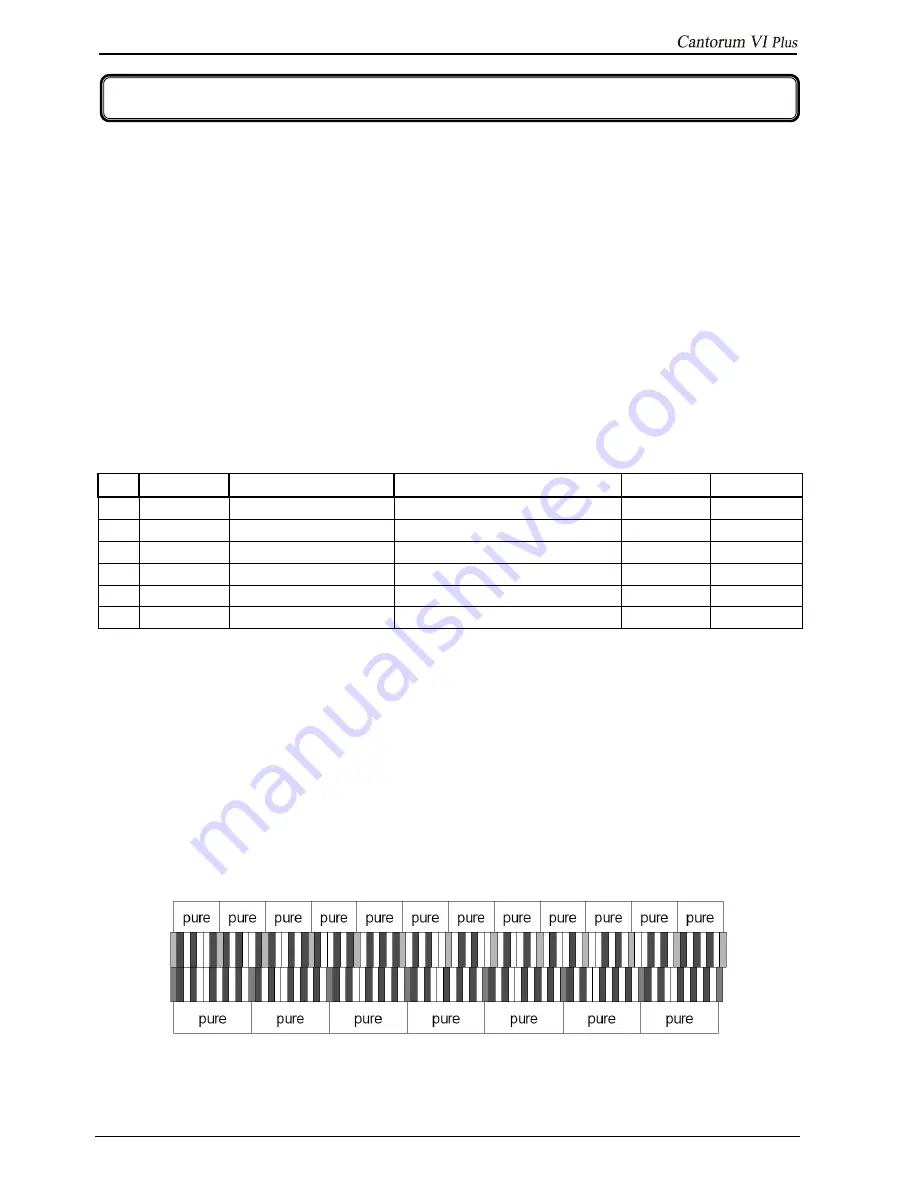
EN - 20
viscount
User Manual
7.1 REPRODUCING THE DEMO SONGS
Six demo songs can be reproduced to evaluate the timbre qualities of
Cantorum VI Plus
.
To play these tracks, follow this procedure:
1.
Press and hold the [BANK] button for a few moments: all the LEDs on the panel flash twice, after
which the LED of the above button will continue to flash.
2.
The combination buttons can be used to play the demo songs. You can also select other songs
during playback, as well as enable and disable stops at your liking, select the organ style and the
desired temperament.
3.
To stop playback, press the button whose song is playing or press [BANK] to return to normal
operation.
7.2 LIST OF DEMO SONGS
N.° AUTHOR
TITLE
BASED
ON
DURATION STYLE
1
A. Hesse
Allegretto in F major
Leichte Präludien für Orgel n°17
1:08
BAROQUE
2
C. H. Rinck
Lobe den Herren
Album n°94
0:51
BAROCK
3
C. H. Rinck
Fughetta in C major op.116 Präludien Album n°24 H. Bungart 1:18
ROMANTIC
4
A. Hesse
Postlude in G major
Leichte Präludien für Orgel n°23
1:04
SYMPHONIC
5
L. Boëllmann Sortie in Bb
“Heures Mystiques" 1er Volume op.29
2:06
SYMPHONIC
6 S.
Guaiana Improvvisazioni
“Orchestra time”
5:16
BAROQUE
7.3 TEMPERAMENT
Tuning a fixed intonation instrument (e.g. organs) consists of creating a chain of twelve fifths, properly
crafted so that at the extremes the interval can be reduced, through division or multiplication, to a perfect
octave. A perfect fifth is achieved when two sounds have a frequency ratio of 3:2. If from any sound we
calculate twelve ascending perfect fifths, the sound obtained is (3/2)
12
. With 7 octaves instead, the result is
a 27 frequency. If we compare these values we find that (3/2)
12
is slightly higher than 2
7
. Rounding off
after the fourth decimal, we find that:
(3/2)
12
=129,7463 , while 2
7
= 128,0000. The ratio between these two value is called Pythagorean comma.
It can be defined as the surplus of twelve perfect fifth compared to seven octaves, both starting from the
same sound.
The picture is not in scale (otherwise the comma would be almost invisible) but it gives a graphical
understanding of the problem.
Now, dividing the Pythagorean comma in 12 equal parts, and subtracting this value to each pure fifth, the
7. APPENDIX






























